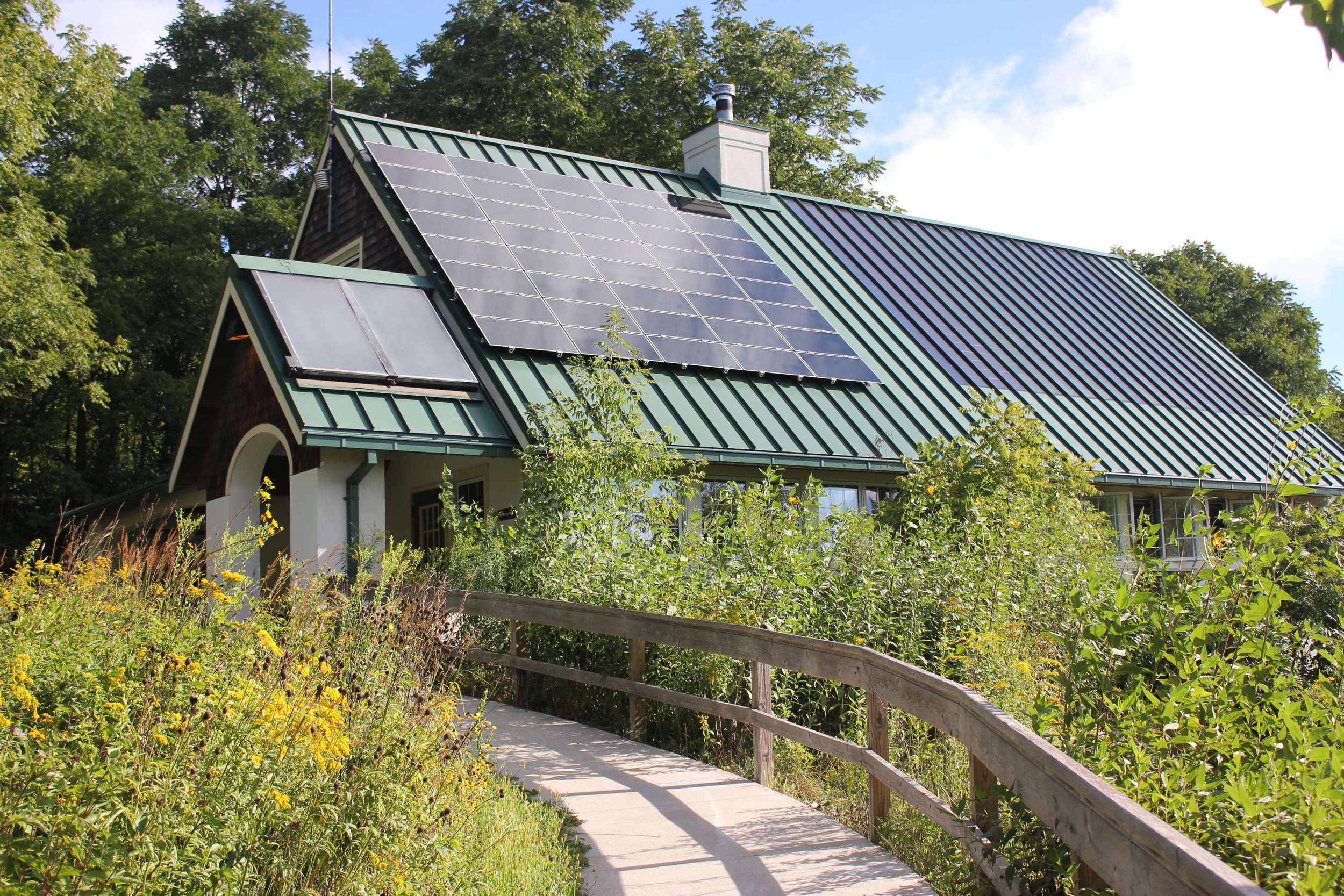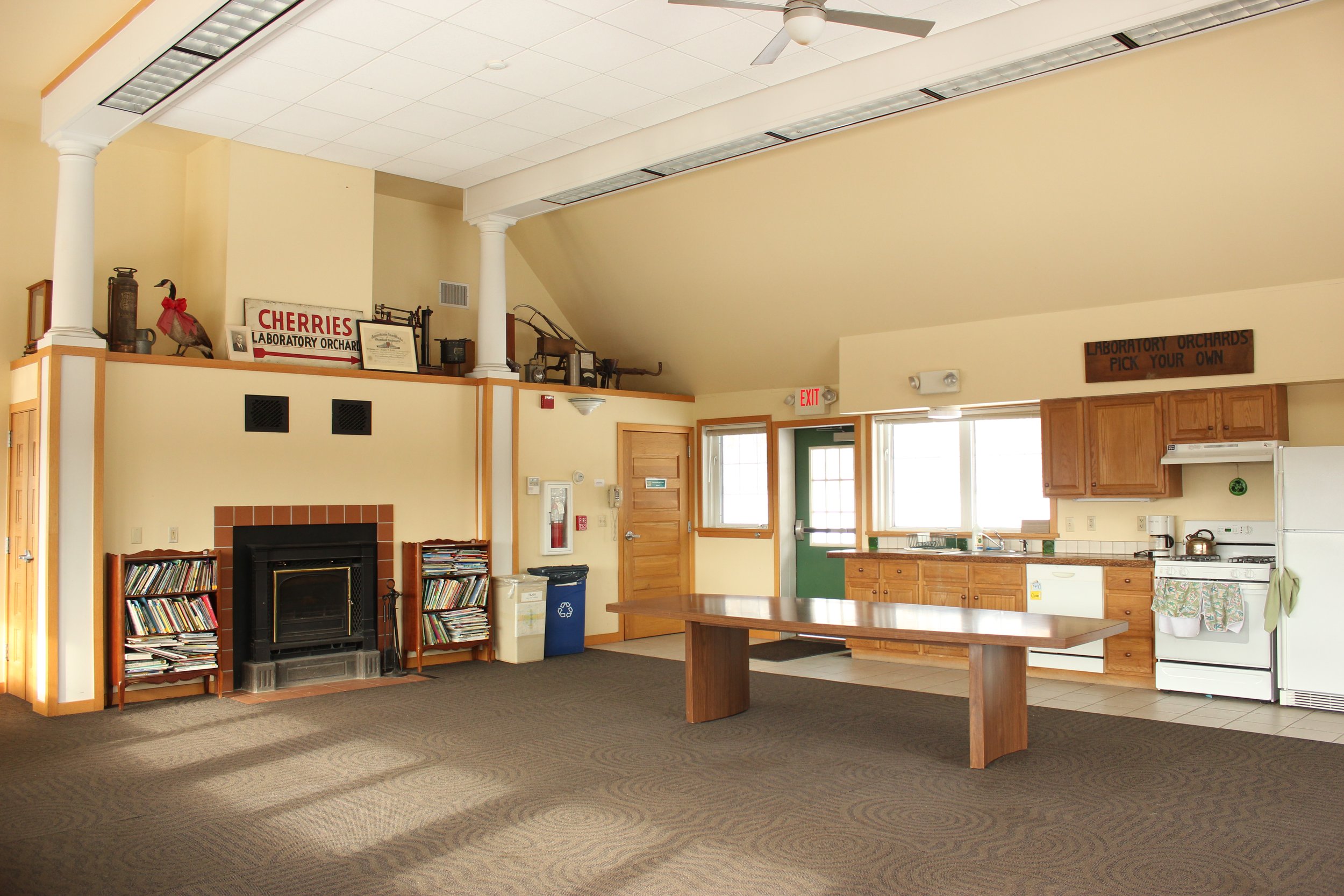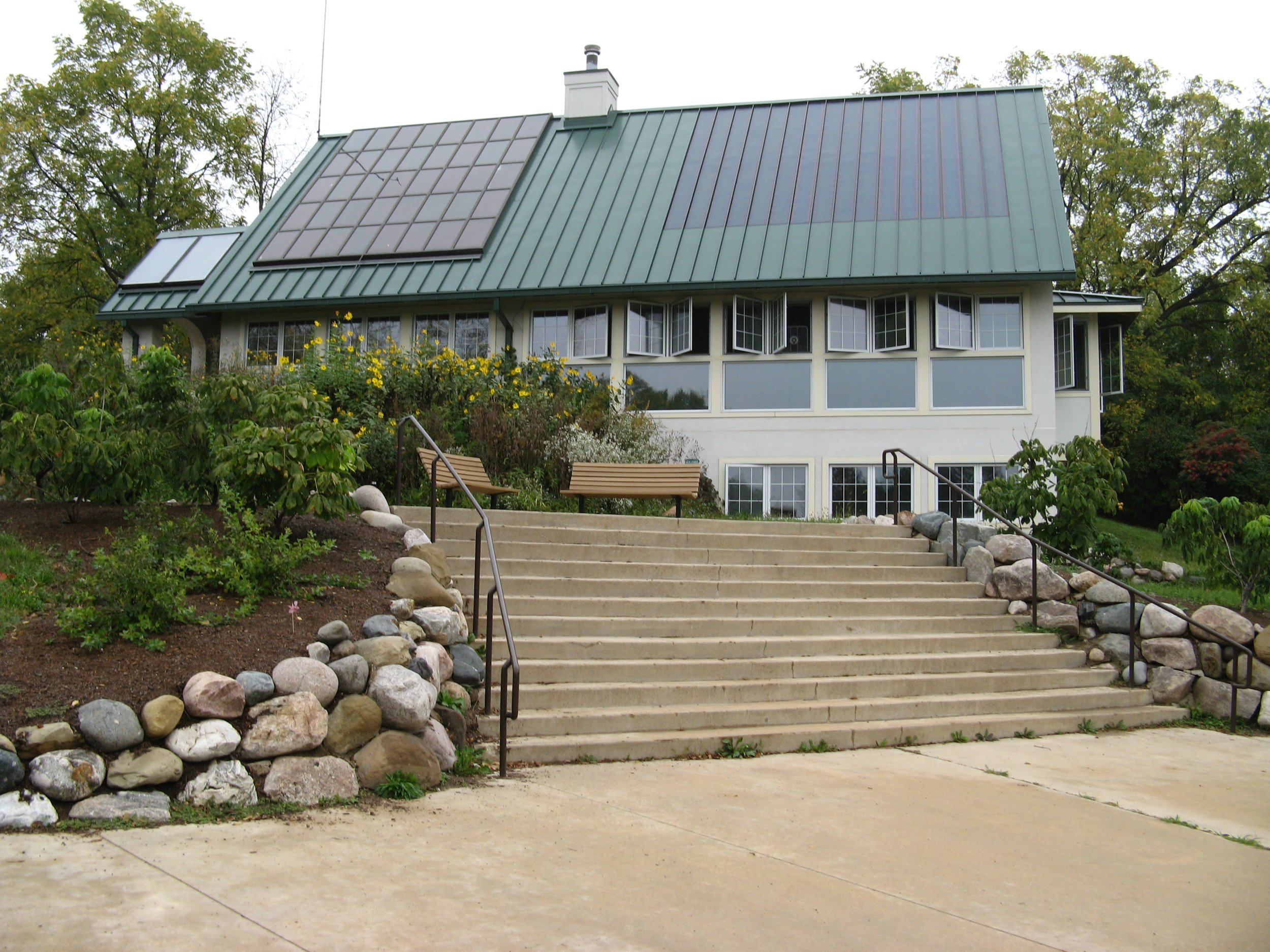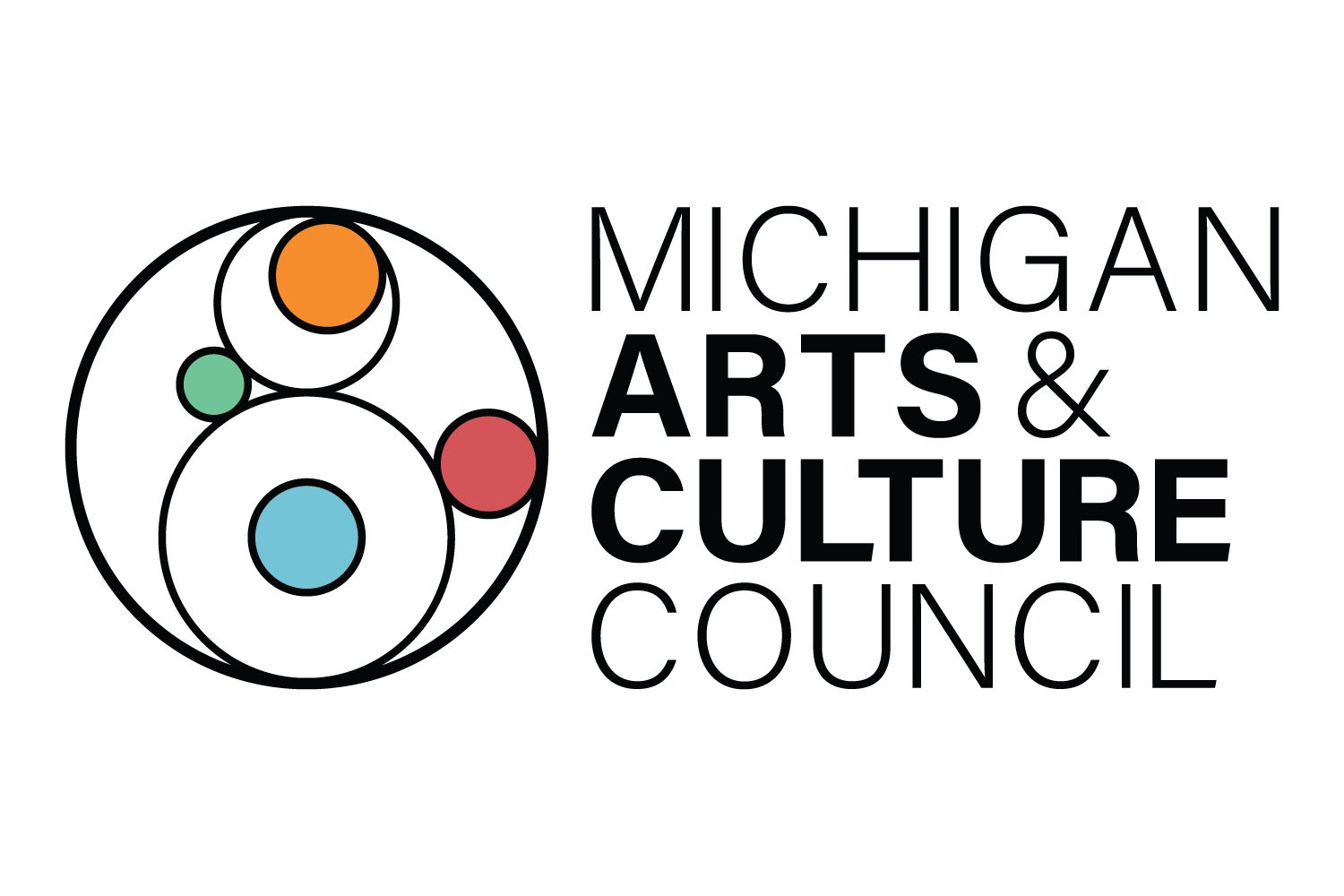The DTE Energy Nature House
The DTE Energy Nature House showcases energy systems, building techniques, and recycled materials that enable us to live lightly on the earth.
We're confident Dr. Leslie, a scientist and researcher, would have been intrigued by the green technology that makes the DTE Energy Nature House hum. As someone dedicated to environmental protection, we know he would have loved the sustainable, low impact model it presents. Leslie Science & Nature Center is itself an example of the difference one or two people can make. The Nature House, likewise, illustrates the positive impact each of us can have in our world. Small actions add up!
Today, the DTE Energy Nature House is home to many of our camps and much of our educational programming. It is also available for rental and special events. Due to its frequent use for events, its interior is generally not open to the public, although visitors are welcome to explore outside along with the rest of the grounds.
The DTE Energy Nature House features:
Solar Energy
Photovoltaic arrays on the roof convert the sun's energy into useable electricity. A ten-inch-thick mass wall absorbs energy from the sun and helps to retain heat in the building. Solar thermal panels on the porch heats the water the in the building.
View archived data on the DTE Energy Nature House's solar system performance.
Water Conservation
Composting toilets use no water and incorporate a simple system of natural aerobic biological reduction to convert human waste into compost. Grey water from kitchen and bathroom sinks is piped through a planting bed in the basement where the water is filtered and reused much the same way that a wetland naturally cleanses water. Rainwater is collected from the roof and stored in underground cisterns to be used for irrigation and to fill our aquariums in the Critter House.
Natural and Recycled Materials
The DTE Energy Nature House's ceramic tiles were made from recycled auto glass, the carpet tiles utilize 100% recyclable materials, and interior finishes are made from the chaff of sunflower plants, soy resin, and low-VOC paint.
We are grateful for the funding provided by the Michigan Arts & Culture Council and Creative Washtenaw in 2021 and 2022. This generous support provides our Wildlife Team with ongoing Professional Development with leading bird-of-prey experts.





